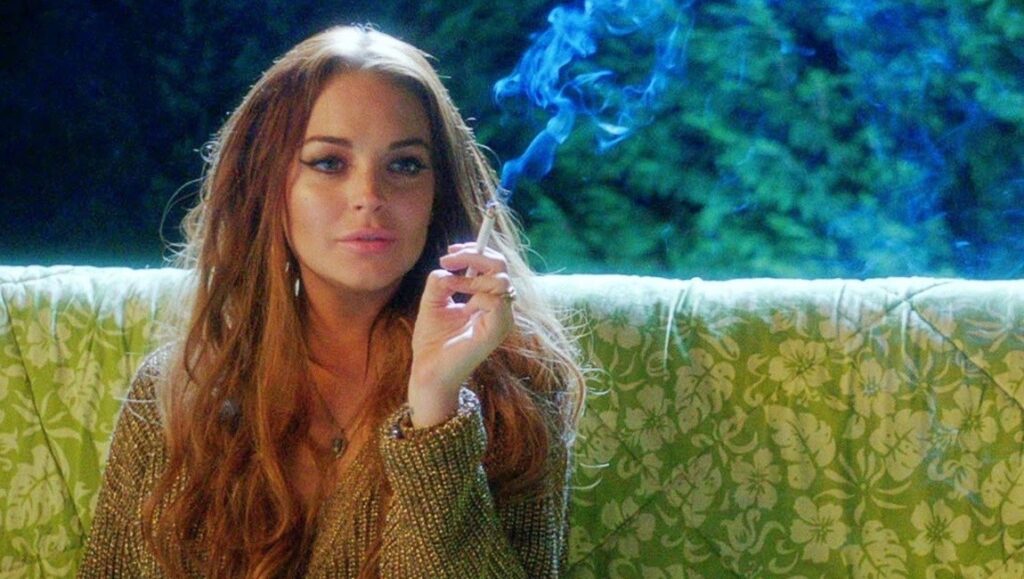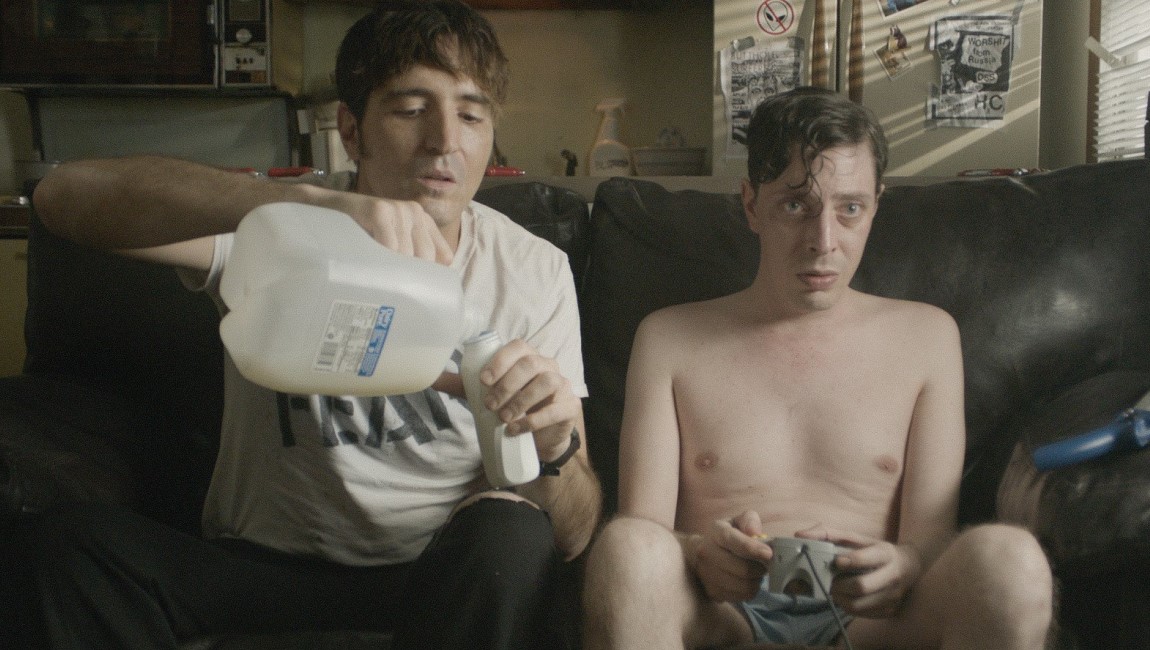Any discussion of the 20th century’s most brutal novels in American literature must include Cormac McCarthy’s Blood Meridian (1985) and Bret Easton Ellis’s American Psycho (1991). McCarthy’s novel mines its 19th-century American frontier history (and mythology) for visceral horror; Ellis’ markedly contemporary satire transcribes psychopathic Wall Street yuppie Patrick Bateman’s digressive, reality-blurring musings on murder, sexual conquest, expensive dining, grooming routines, and Whitney Houston’s artistic merits. The self-evident tonal and stylistic differences between these two novels are largely representative of the authors’ respective oeuvres. McCarthy’s voice owes as much to canonical 19th-century American writers like Herman Melville and Nathaniel Hawthorne as it does to southern Gothic fiction à la William Faulkner and Flannery O’Connor. By contrast, Ellis mixes the crisp minimalism of Joan Didion and Ernest Hemingway with Stephen King’s horror-infected realism to offer a chillingly neutral gaze at modern milieus of privilege and cruelty.
In 2013, veteran auteurs directed original screenplays by both writers: Ridley Scott helmed McCarthy’s The Counselor and Paul Schrader took on Ellis’ The Canyons. These digitally shot, postmodern noirs are substantially different in many respects — not least because Scott’s picture boasts a much larger budget and canvas than Schrader’s — but their nearly simultaneous releases and thematic overlaps warrant critical discussion. Although Schrader and Scott’s career paths diverged, it’s worth noting the proximity of their late-’70s directorial debuts: Scott’s Napoleonic Joseph Conrad adaptation The Duelists was released in 1977, and Schrader’s labor union drama Blue Collar came out the following year. Born in 1946, Schrader is less than a decade younger than Scott, and while the former cut his teeth on academic film theory, penning Transcendental Style: Ozu, Bresson, Dreyer (1972), the latter found his voice through practice, training as a set designer and prolific commercial filmmaker for nearly a decade before moving into feature filmmaking.
Both directors leave their fingerprints all over their films — The Canyons is rife with Bressonisms and perverted scraps of transcendental style, and The Counselor shows Scott’s pessimism alongside his obsessions with visual design and environment. Both films also loudly bear their screenwriters’ trademarks, evidencing Ellis and McCarthy’s close involvement in development and production. Scott states that he expected McCarthy to pay a visit to set, but was surprised when the author lingered throughout the entire production, with the director’s intuitions sometimes at odds with the writer’s, which led to occasionally heated conflict. A similar dynamic exists in The Canyons: Schrader attests that Ellis sees “too much Schrader” in it, while Schrader sees the film as “all Ellis.”
Without doubt, both pictures contain distinctly literary impulses. Their mutually philosophical focuses are transmuted into the updated cinematic grammar of film noir, both using genre-codified signifiers (e.g. the patsy, the femme fatale, the harbinger of death) to navigate contemporary environments characterized by transactionality and spiritual emptiness. The Canyons and The Counselor represent an America unmoored from its own self-aggrandizing mythologies — the capitalist dream as nightmare of anxiety and violence. The films are haunted by symbols rather than subjects, made nowhere clearer than in McCarthy’s naming The Counselor’s title protagonist (played by Michael Fassbender) after his profession — he is a nameless intermediary, a metaphor.
Scott’s entire film is folkloric in its simplicity: when the well-intentioned lawyer protagonist, the titular Counselor, gets involved in a drug deal to address some personal financial issues, he sets off a series of unexpected contingencies that result in several deaths. Schrader’s film is similarly contained: when sociopathic, grownup trust-fund kid Christian (James Deen) learns that his girlfriend Tara (Lindsay Lohan) is having an affair with the star of a low-budget horror film he’s producing — a struggling actor and model named Ryan (Nolan Funk) — he orchestrates intensifying psychological games with emotionally devastating and eventually lethal consequences.
Considering McCarthy and Ellis’ confrontational novels, it’s worth noting that while both The Canyons and The Counselor contain brief explosions of violence, they are primarily cerebral exercises in semiotics. This is key to what the films are: expressions of ideas. (Granted, The Counselor includes one of McCarthy’s most terrifying creations in a fictional execution device called a bolito.) Above all, though, The Canyons and The Counselor are nihilistic abstractions whose violences emerge from moral and emotional absences. In films whose fundamental elements are their dialogue and environments, Schrader and Scott direct with shared emphases on deep-focus compositions, capturing the vast spaces that dwarf their archetypal players. The characters are ciphers of moral ruin veiled by physical allure, with The Counselor’s darkly sultry puppeteer Malkina (Cameron Diaz) playing the mirror to Deen’s sexually confident, power-driven Christian in The Canyons.
The films overlap in their visions of existence as economy under 21st-century America’s digital capitalism. The Counselor was the second film Scott shot using the Red digital camera after Prometheus (the director enjoyed the convenience of color correction this new technology affords), and the film’s lush classicism contrasts with The Canyons’ harshly contemporary, Arri Alexa-lensed images, digital photography is a key aesthetic element in both films. Both present their contemporary landscapes as defined by metaphoric ruin and detritus: The Canyons opens with a montage of derelict movie theaters; The Counselor depicts cocaine transported across the sun-cooked border in a sewage truck and — in what might be its bleakest moment — shows a snuff film victim disposed of in a landfill. Both narratives hinge on the transactionality of individuals and relationships, their worlds populated by characters representing units of currency such as business acumen (The Counselor’s title protagonist), industry connections (Christian in The Canyons, Westray [Brad Pitt] in The Counselor), sex (Tara and Ryan in The Canyons), and deal-gone-wrong collateral.
Further, both films chart their relationships’ currency-tinged dynamics within the ubiquitous paranoia of digital communication surveillance and the eroding privacy therein. Scott and Schrader signal this theme with wealthy characters’ mid-century modern mansions whose glassy bodies commingle exteriors with interiors. The Counselor’s spiky-haired patsy, Reiner (Javier Bardem), leads the Counselor through crowds of sexy partygoers into his opulent Texas estate while his sociopathic girlfriend Malkina coolly plans his demise. Similarly, the arrogant Christian asserts that “nobody has a private life anymore” as he swaggers through his high-windowed palace, monitoring his partner Tara’s movements, all the while arranging hookups for her via a fictional phone app called Amore.
Amore plays a central role in The Canyons’ opening scene, which outlines the plot’s pervading fixations on sex, commerce, duplicity, surface-selves, and the digital. While out for a bougie dinner with his assistant Gina (Amanda Brooks) and her partner Ryan, Christian flippantly proposes Amore candidates to Tara. Given that Ryan, who has been hired to act in a film Christian is producing, is having a secret affair with Tara, the scene finds the illicit lovers enacting two levels of duplicity: faking respect for Christian while also feigning indifference to each other. This scene immediately reveals The Canyons’ connections with Ellis’ Chandler-tinted Imperial Bedrooms (2010), the Hollywood-set meta-sequel to his debut novel, Less Than Zero (1985): both works envision Hollywood as a fading illusion defined by deception and exploitation. In one of The Canyons’ tensest scenes, Tara’s bedroom smart TV disseminates text messages from one of Christian’s exes, warning her of his abusive past. The Counselor also finds its grimmest moment in a menacing message from an anonymous sender — the title character sees his traumatized reflection on a sharpie-scrawled snuff DVD.
As demonstrations of strong literary voices filtered through equally pronounced cinematic perspectives, The Canyons and The Counselor present a fascinatingly specific 2013 double-feature. Over a decade later, both films signal prophetic visions of breakdown — in empathetic corporeality, in cinema genre legacies, and in the capitalist American psyche.









